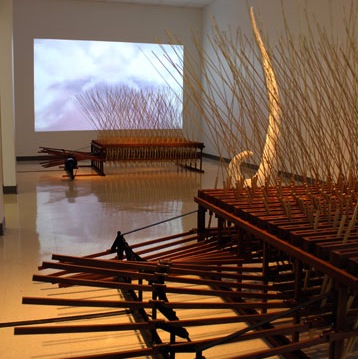Wasn’t kinetic art a phenomenon of decades past? Maybe not. It may be making a comeback. Or has already.
 Washington University in St. Louis issued a call for papers the other day for a session at the Midwest Art History Society Annual Conference next April, that began “In the mid-1950s and 1960s kinetic art became an international phenomenon. With no single leader, manifesto, or aesthetic the term covers a wide range of works involving actual and optical movement, as well as works that demand collaborative engagement in the form of audience interaction.”
Washington University in St. Louis issued a call for papers the other day for a session at the Midwest Art History Society Annual Conference next April, that began “In the mid-1950s and 1960s kinetic art became an international phenomenon. With no single leader, manifesto, or aesthetic the term covers a wide range of works involving actual and optical movement, as well as works that demand collaborative engagement in the form of audience interaction.”
The CFP notes that the nearby Kemper museum has recently acquired several “significant” kinetic works from the 1960s, including pieces by Robert Breer, Davide Boriani, Karl Gerstner, Julio Le Parc, and Man Ray, and that these “reflect a range of experimental approaches emerging in the postwar period.” It also notes the number of recent exhibitions on the subject, by way of explaining why now is a good time to look at kinetic art.
Truth be told, I hadn’t noticed any such exhibitions until this month, when the MIT Museum opened 5000 Moving Parts on Nov.  21. The MIT show, organized by Laura Knott, features “large-scale works by four North American artists whose sculptures and interactive machinery show the wide range of work taking place in the contemporary kinetic art field,” the press release said.
So maybe this movement deserves a little more attention now. I like the sound of the works in the MIT show. It includes pieces by Arthur Ganson (in collaboration with sound artist Christina Campanella), Anne Lilly, John Douglas Powers, and Rafael Lozano-Hemmer. Powers’s Iahu, at left, is billed as having “beautiful waves of moving parts that mesmerize viewers with their accuracy and simplicity.” (I’m ready to be mesmerized.)
After I wrote this, I discovered that the Boston Globe had a short piece on the MIT show, here.
Photo Credit: Courtesy of MIT
